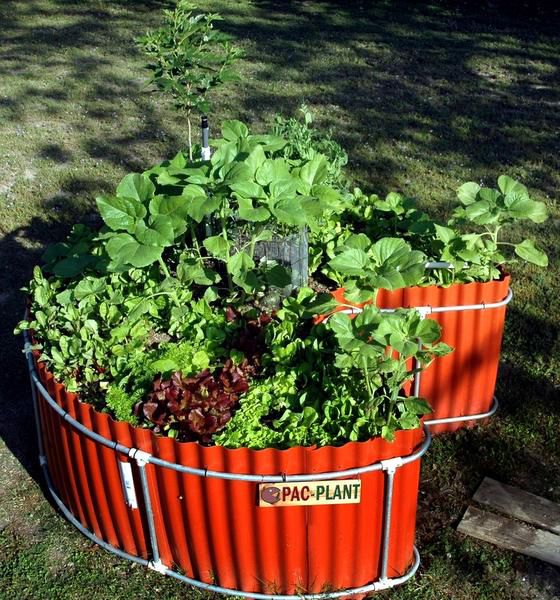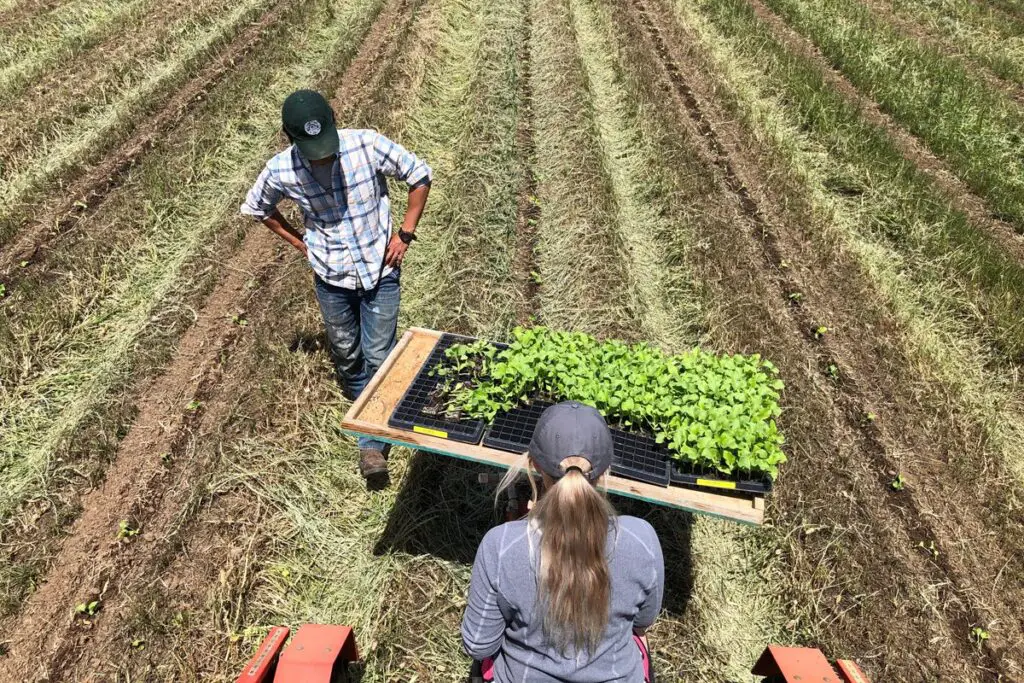On average, a tomato plant can produce up to six to eight harvests per season. Tomatoes are among the most common vegetables grown in the home garden.
They are full of nutrients and very versatile in the kitchen. It is important to know how many harvests to expect per tomato plant, so you can plan your growing season accordingly. While the number of harvests may vary depending on factors such as climate, soil, and plant variety, a typical tomato plant can produce six to eight harvests per season.
This means that you can enjoy fresh, juicy tomatoes all season long. In this article, we will explore the factors that affect the number of harvests, tips to increase your yield, and the best practices to ensure healthy growth and maximum productivity of your tomato plants.

Credit: www.dallasnews.com
Understanding Tomato Plant Harvests
Tomatoes are a popular vegetable for home gardeners and commercial growers alike because they are relatively easy to grow and are versatile in their uses. Understanding the life cycle and growth process of a tomato plant is essential to maximize the plant’s yield.
Explanation Of A Tomato Plant’S Life Cycle And Growth Process
A tomato plant goes through several distinct stages during its life cycle, including seed germination, vegetative growth, flowering, and fruit production. Understanding these stages can help gardeners know when to expect their tomato plants to mature and bear fruit.
- Seed germination: This is the beginning of a tomato plant’s life cycle. Seeds need moisture, warmth, and oxygen to germinate. Germination typically takes between five and ten days.
- Vegetative growth: During this stage, the plant produces leaves and stems. The process of photosynthesis begins, which helps the plant produce food for itself.
- Flowering: After the vegetative growth stage, the plant will begin to flower. The flowers are essential for fertilization, which is necessary for fruit production.
- Fruit production: Once the flowers are fertilized, the plant will begin to produce fruit. Tomatoes typically take between 55 and 100 days to mature, depending on the variety and growing conditions.
Discussion On How The Timing And Frequency Of Tomato Plant Harvests Can Affect Its Overall Yield
Knowing when to harvest your tomatoes is just as important as understanding its life cycle. Harvesting too early or too late can negatively impact the overall yield. Here are some things to consider:
- Timing: It’s important to know when your tomatoes are ripe and ready for harvest. A tomato that’s too early will be under-ripe, lacking in flavor, and not as sweet. A tomato that’s too late will be overripe, with a weakened structure and prone to rotting.
- Frequency: Harvesting your tomato plants frequently encourages them to keep producing fruit. Leaving the tomatoes on the vine for too long can signal to the plant that its work is done and also takes nutrients away from new fruit.
Understanding the timing and frequency of tomato plant harvests is essential for maximizing overall yield. Keeping in mind the different stages of a tomato plant’s life cycle and knowing when tomatoes are ripe will help gardeners get the most out of their tomato plants.
Factors That Affect Tomato Plant Harvests
As a gardener, there is nothing more satisfying than growing tomatoes that provide one of the most valuable crops in your home garden. However, getting a bountiful harvest is not as easy as just planting and waiting for them to mature.
Several factors affect tomato plant harvests that every gardener must consider to increase the yield.
Soil And Water Quality
The soil you choose is the foundation upon which all plant growth depends. Below are a few key factors that contribute to the quality of soil and water that affect tomato plant harvests:
- Soil nutrient levels: Tomatoes are nutrient-hungry plants, and soil with insufficient nutrients will result in stunted growth and fewer fruits. Healthy and nutrient-rich soil guarantees a good tomato harvest.
- Water consistency: Tomatoes require adequate amounts of water to survive and grow. Without proper watering, the plants won’t thrive, flower, and produce fruits. It is essential to keep the soil consistently moist to get a good yield of tomatoes.
Climate And Seasonal Changes
Tomatoes require specific weather and climatic conditions to grow optimally. Factors like temperature, humidity, and sunlight can influence how many harvests one can get per tomato plant. Here’s how:
- Temperature: Tomatoes thrive in warm weather, and temperatures below 10°c and above 32°c can affect the growth and yield of tomato plants. For a good tomato harvest, the temperature should be in the range of 21-24°c.
- Sunlight: Tomato plants require at least 6 to 8 hours of direct sunlight each day to grow and produce high-quality fruit.
- Seasonal changes: Planting tomatoes at the right time is critical for achieving a good yield. Early and late frost can damage the plants or even kill them, so be sure to plant the tomatoes at the right time and take measures to protect the plants from temperature swings.
Planting Techniques And Maintenance
The planting technique and ongoing maintenance play a crucial role in ensuring tomato yield. Here are some tips to achieve a successful harvest:
- Spacing: Tomatoes need space to grow, and it’s essential to space them out while planting them. The standard spacing is 45-60cm.
- Pruning: Pruning is essential to remove the suckers and keep the plant healthy. It also promotes air circulation, reduces the risk of diseases and pests, and ultimately leads to a good tomato yield.
- Staking or caging: Staking or caging helps in supporting the plants and keeping them upright. It also enhances air circulation and reduces the risk of fungal diseases.
- Fertilizing: Tomato plants require regular fertilizing to grow and produce fruits. Applying organic fertilizers like compost, bone meal, and fish meal helps in increasing soil fertility and overall yields.
Tomato plant harvests depend on various factors, including soil and water quality, climate, and seasonal changes, and planting and maintenance techniques. By understanding these factors and following the right practices, you can achieve a bountiful harvest of delicious home-grown tomatoes.
Maximizing Tomato Plant Harvests
Growing your own tomatoes is exciting, but what’s even more thrilling is the satisfaction you get from a bountiful harvest. But how many harvests can you get from a single tomato plant? And what can you do to ensure you get the most from your plants?
Tips And Best Practices For Ensuring An Abundant Yield From Tomato Plants
-keep your plants healthy by watering them correctly. Overwatering can lead to root rot, while underwatering can cause stunted growth. Strike a balance and water them regularly without letting the soil become waterlogged.
-ensure proper sunlight for the tomato plants. Tomatoes need at least six hours of direct sunlight every day. Consider using grow lights if the weather is not ideal or if you are growing your plants indoors.
-stake your plants. Supporting your tomato plants with stakes will prevent them from collapsing under the weight of their fruit. It also ensures they receive proper air circulation, making them less prone to disease.
-remove suckers. Suckers are the small shoots that grow between the main stem and branches of the plant. Keeping them trimmed will allow the plant to use its energy more efficiently, resulting in more fruit.
-feed your plants where necessary. Tomatoes require nutrients, especially during their peak growing periods, to develop healthy fruits. Consider adding organic fertilizers like compost, bone meal, and worm castings to the soil.
Discussion On The Different Types Of Tomato Plants And Which Ones Are Best-Suited For Multiple Harvests
There are generally two types of tomato plants: determinate and indeterminate. Determinate plants produce fruit only once, while indeterminate plants continue to produce fruit throughout the growing season.
- Determinate tomato plants include popular varieties like roma and san marzano. They are compact and grow to a predetermined size, producing a lot of fruits at once. They are ideal for gardeners who want to can or preserve tomatoes.
- Indeterminate tomato plants, such as better boy and brandywine, continue to grow and produce fruit throughout the growing season. They are ideal for those who want an extended harvest period or who prefer to pick fruits as they ripen.
To maximize your tomato plant harvests, choose varieties that are best suited to your growing space and personal preferences, and ensure to adhere to the tips and best practices discussed above. With these measures in place, your tomato plants will yield abundant fruits throughout the growing season.
Frequently Asked Questions On How Many Harvests Per Tomato Plant
How Many Harvests Can You Get From One Tomato Plant?
A single tomato plant can yield several harvests as long as it receives proper care. The number of harvests depends on several factors, including the variety of the plant, growing conditions, and pruning techniques.
How Often Do You Harvest Tomatoes From A Plant?
Tomatoes can be harvested once they are ripe and fully grown. Generally, it takes around 20-30 days from the time a flower blooms for the fruit to ripen. Once the fruit is red, it’s time to pick them every two to three days.
How Do You Encourage More Tomato Harvests?
To encourage more tomato harvests, you can use fertilizers, bone meal, or other soil nutrients to give the plant the nutrients it needs to thrive. Proper pruning and removing damaged or diseased foliage can also help the plant to focus its energy on producing more fruit.
What Is The Average Yield Per Tomato Plant?
The average yield per tomato plant can vary significantly depending on the variety, growing conditions, and care given. On average, a single tomato plant can produce between 10 to 15 pounds of fruit during a growing season.
How Many Times Can You Harvest Tomatoes In A Year?
The number of harvests you can get from a single plant depends on the length of the growing season and other factors like weather conditions. In most cases, you can expect to get at least two to three harvests per plant during the summer growing season.
Conclusion
Finally, understanding the number of harvests per tomato plant is critical for any gardener or farmer looking to optimize their production. It involves proper planting, maintenance, and harvesting practices, which will ultimately influence the amount of yield achieved. The number of harvests per tomato plant varies depending on multiple factors, including the tomato variety, the climate, and soil conditions, among others.
Indeterminate tomatoes produce more harvests, while determinate tomatoes produce fewer harvests. Therefore, it’s crucial to choose the appropriate tomato variety that meets your needs and fits the growing conditions to maximize your tomato harvests. Proper care and attention throughout the growing season are also necessary for maximum yield.
With the right techniques, multiple tomato harvests per plant are undoubtedly possible.


